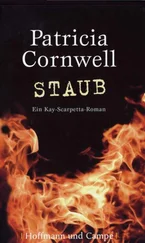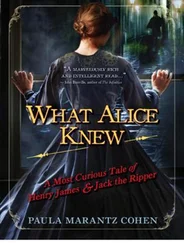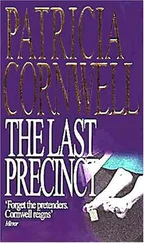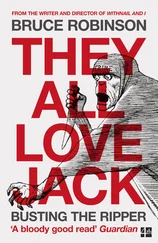Patricia Cornwell - Portrait Of A Killer - Jack The Ripper - Case Closed
Здесь есть возможность читать онлайн «Patricia Cornwell - Portrait Of A Killer - Jack The Ripper - Case Closed» весь текст электронной книги совершенно бесплатно (целиком полную версию без сокращений). В некоторых случаях можно слушать аудио, скачать через торрент в формате fb2 и присутствует краткое содержание. Жанр: Триллер, на английском языке. Описание произведения, (предисловие) а так же отзывы посетителей доступны на портале библиотеки ЛибКат.
- Название:Portrait Of A Killer: Jack The Ripper - Case Closed
- Автор:
- Жанр:
- Год:неизвестен
- ISBN:нет данных
- Рейтинг книги:5 / 5. Голосов: 1
-
Избранное:Добавить в избранное
- Отзывы:
-
Ваша оценка:
- 100
- 1
- 2
- 3
- 4
- 5
Portrait Of A Killer: Jack The Ripper - Case Closed: краткое содержание, описание и аннотация
Предлагаем к чтению аннотацию, описание, краткое содержание или предисловие (зависит от того, что написал сам автор книги «Portrait Of A Killer: Jack The Ripper - Case Closed»). Если вы не нашли необходимую информацию о книге — напишите в комментариях, мы постараемся отыскать её.
Portrait Of A Killer: Jack The Ripper - Case Closed — читать онлайн бесплатно полную книгу (весь текст) целиком
Ниже представлен текст книги, разбитый по страницам. Система сохранения места последней прочитанной страницы, позволяет с удобством читать онлайн бесплатно книгу «Portrait Of A Killer: Jack The Ripper - Case Closed», без необходимости каждый раз заново искать на чём Вы остановились. Поставьте закладку, и сможете в любой момент перейти на страницу, на которой закончили чтение.
Интервал:
Закладка:
Annie Chapman was sleeping off her last glass of spirits while London's early night life was going on. The week had been a bad one, worse than usual. Annie was forty-seven years old and missing her two front teeth. She was five feet tall, overweight, with blue eyes and short, dark-brown, wavy hair. As the police later put it, "she had seen her better day." On the street she was known as "Dark Annie." In some accounts her estranged husband was said to be a veterinary surgeon, but in most of them he was described as a coachman employed by a gentleman who lived in the Royal Borough of Windsor.
Annie and her husband had no contact with each other after they separated, and she made no inquiries into his life until her weekly allowance of ten shillings suddenly stopped in late 1886. One day, a wretched-looking woman, having the appearance of a tramp, appeared at the Merry Wives of Windsor public house and inquired about Chapman. She said she had walked twenty miles from London, staying in a lodging house along the way, and wanted to know if her husband was ill or using that as an excuse not to send money. The woman at the door of the Merry Wives of Windsor informed the tramp that Mr. Chapman had died on Christmas Day. He left Annie nothing but two children who wanted nothing to do with her: a boy who was an inmate of the Cripples' Home, and a well-educated daughter living in France.
Annie moved in with a sieve maker for a while, and when he left her, she borrowed small sums from her brother, who finally cut her off. She had no further contact with any members of her family, and when her health allowed, she made pennies by selling crochet work and flowers. Acquaintances described her as "clever" and industrious by nature, but the more her addiction to alcohol tightened its grip on her life, the less she cared what she did to earn her keep.
During the four months before her death, Annie had been in and out of the infirmary. She was spending her nights in Spitalfields doss-houses, the most recent one located at 35 Dorset Street, which joined Commercial Street and Crispin Street like a short rung on a ladder. There were an estimated 5,000 lodging-house beds in the hellish dens of Spitalfields, and The Times later observed that at Annie's inquest the "glimpse of life… was sufficient to make [jurors] feel there was much in the 19th century civilization of which they had small reason to be proud." In Annie Chapman's world, the poor were "herded like cattle," and were "near starvation." Violence smoldered day and night, fueled by misery, alcohol, and rage.
Four nights before her death, Annie got into an altercation with another lodger named Eliza Cooper, who confronted her in the lodging-house kitchen, demanding the return of a scrap of soap Annie had borrowed. Annie angrily threw a halfpenny on the table and told her to go buy it herself. The two women began to quarrel and carried their disagreement to the nearby Ringer public house, where Annie slapped Eliza across the face and Eliza punched Annie in the left eye and chest.
Annie's bruises were still noticeable the early Saturday morning of September 8th, when John Donovan, the deputy of the lodging house on Dorset Street, demanded payment of eight pennies for a bed if she planned to stay. She replied, "I have not got it. I am weak and ill and have been in the infirmary." Donovan reminded her that she knew the rules. She replied that she would go out and get the money and please not to let her bed to someone else. Donovan would later tell police that she "was under the influence of drink" when the night watchman escorted her off the property.
Annie took the first right on Little Paternoster Row, and when the night watchman saw her last she was on Brushfield Street, which ran east to west between what was then called Bishopsgate Without Norton Folgate and Commercial Street. Had she headed but a few blocks north on Commercial Street, she would have reached Shoreditch, where there were several music halls (the Shoreditch Olympia, Harwood's, and Griffin's). A little farther north was Hoxton - or the very route Walter Sickert sometimes took when he walked home to 54 Broadhurst Gardens after evenings at various music halls, theaters, or wherever it was he went on his obsessive wanderings late at night and in the early morning hours.
At 2:00 A.M., when Annie emerged onto London's East End streets, it was fifty degrees and sodden out. She was dressed in a black skirt, a long black jacket hooked at the neck, an apron, wool stockings, and boots. Around her neck was a piece of a black woollen scarf tied in front with a knot, and under it she wore a handkerchief that she recently had bought from another lodger. On the wedding ring finger of her left hand she wore three base metal or "flash" rings. In a pocket on the inside of her skirt was a small comb case, a piece of coarse muslin, and a torn bit of envelope that she had been seen to pick off the lodging-house floor and use to tuck away two pills she had gotten from the infirmary. The torn envelope had a red postmark on it.
If anyone saw Annie alive over the next three and a half hours, no witness ever came forward. At quarter to five, thirty-seven-year-old John Richardson, a porter at the Spitalfields Market, headed toward 29 Han-bury Street, a rooming house for the poor that, like so many other dilapidated dwellings in Spitalfields, had once been a barnlike workplace for weavers to toil on hand looms until steam power had put them out of business. Richardson's mother rented the house and sublet half of its rooms to seventeen people. He, being the dutiful son, had dropped by, just as he always did when he was up early, to check the security of the cellar. Two months ago someone had broken into it and had stolen two saws and two hammers. His mother also ran a packing-case business, and stolen tools were no small matter.
Satisfied that the cellar was safely locked, Richardson went through a passage that led into the backyard and sat on the steps to cut a bothersome piece of leather off his boot. His knife was "an old table knife," he later testified at the inquest, "about five inches long," and he had used it earlier to cut "a bit of carrot," then absently tucked the knife into a pocket. He estimated he was sitting out on the steps no longer than several minutes, his feet resting on flagstone that was just inches from where Annie Chapman's mutilated body would be found. He neither heard nor saw anyone. Richardson laced up his mended boot and headed to the market just as the sun began to rise.
Albert Cadosch lived next door at 25 Hanbury, his backyard separated from 29 Hanbury by a temporary wooden fence that was five to five and a half feet high. He later told police that at 5:25 A.M., he walked into his backyard and heard a voice say "No" from the other side of the fence. Several minutes later, something heavy fell against the palings. He did not check to see what had caused the noise or who had said "No."
Five minutes later, at 5:30 A.M., Elisabeth Long was walking along Hanbury Street, heading west to Spitalfields Market, when she noticed a man talking to a woman only a few yards from the fence around the yard at 29 Hanbury Street, where Annie Chapman's body would be found on the other side barely half an hour later. Mrs. Long testified at the inquest that she was "positive" the woman was Annie Chapman. Annie and the man were talking loudly but seemed to be getting along,
Mrs. Long recalled. The only fragment of the conversation she overheard as she made her way down the street was the man asking, "Will you?" and the woman identified as Annie replying, "Yes."
Obviously, the times given by witnesses conflict, and they never stated at the inquest how they happened to know what time it was when they walked past people or stumbled onto bodies. In that era, most people told time by their routines, the position of the sun in the sky, and church clocks that chimed the hour or half hour. Harriet Hardiman of 29 Han-bury testified at the inquest she was certain it was 6:00 A.M. when she was awakened by a commotion outside her window. She was a cat meat saleswoman whose shop was inside the rooming house; she made her living by going out with a barrow full of stinking fish or slop left over from slaughterhouses to sell to cat owners while long lines of felines followed along her routes.
Читать дальшеИнтервал:
Закладка:
Похожие книги на «Portrait Of A Killer: Jack The Ripper - Case Closed»
Представляем Вашему вниманию похожие книги на «Portrait Of A Killer: Jack The Ripper - Case Closed» списком для выбора. Мы отобрали схожую по названию и смыслу литературу в надежде предоставить читателям больше вариантов отыскать новые, интересные, ещё непрочитанные произведения.
Обсуждение, отзывы о книге «Portrait Of A Killer: Jack The Ripper - Case Closed» и просто собственные мнения читателей. Оставьте ваши комментарии, напишите, что Вы думаете о произведении, его смысле или главных героях. Укажите что конкретно понравилось, а что нет, и почему Вы так считаете.












